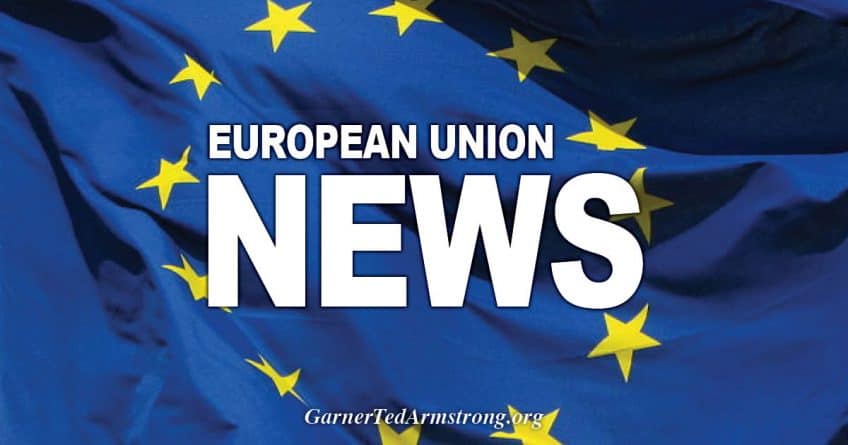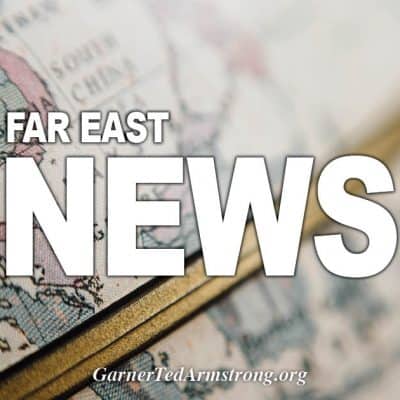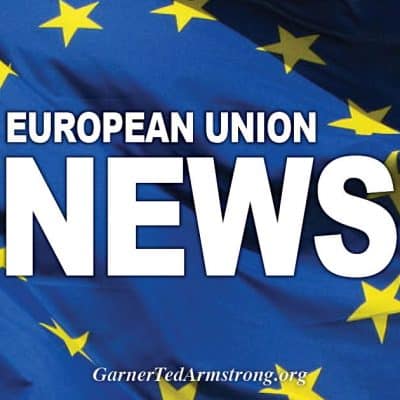A few dozen vehicles arrive at the one location authorized for anti-COVID restriction protesters, while others plot ways to enter the city.
They came with grand plans to rattle the seat of the European Union, angry about COVID restrictions. But the “European freedom convoy” arrived in Brussels Monday scattered and confused, with occasional bark, yet little bite.
For the moment, the convoy had run low on gas.
On the main roads into Brussels, police diverted vans, campers, buses and cars to a sanctioned protest area — a 10,000-spot parking lot barely within the city limits. The scene was still and sparse, a far cry from the paralyzed bridges and police clashes that have metastasized across the globe in recent weeks as a trucker protest in Canada spread through the U.S., Australia and Europe.
Within the city, protesters on foot popped up in several places as conflicting messages swirled around social media over where to head. At the original protest spot, the Parc du Cinquantenaire just east of the EU institutions, fewer than 100 people had assembled by midday, chatting in small clusters. Elsewhere, helmeted police in riot gear occasionally outnumbered the protesters. In total, the police said, “several hundred demonstrators” showed up.
Still, there were the occasional flare-ups. Some tear gas was deployed in areas where protesters were blocked, and police said they made about 30 arrests for disturbing the peace or for carrying a prohibited weapon. Rumors also circulated late in the day of possible Brussels gatherings on Tuesday, with some people pledging to take advantage of a planned police strike that has since been delayed.
But for the most part, the initial push was more of a nudge. Shortly after 4 p.m., the police lifted the traffic controls around the Belgian capital. Around the same time within the capital, people started dispersing. One protester was overheard suggesting a drink at one of the sidewalk terraces clustered around Place du Luxembourg, nestled in the heart of the EU district.
Taken together, it amounted to a low-key next chapter in the ongoing “freedom convoy” saga. The protests, which started in opposition to specific COVID restrictions, have since become a worldwide rallying cry for anti-vaccination groups, as well as more extremist organizations like white supremacists and far-right political parties.
After swarming Paris over the weekend, the European convoy set its sights on Brussels — a symbolic target as the EU has encouraged and coordinated some of the more omnipresent COVID structures now integrated into everything from travel to eating out.
By midday, however, it appeared the group was fragmenting as it rolled toward Brussels.
Some factions claimed they were heading instead to Strasbourg, the joint home of the European Parliament in France, to meet with sympathetic lawmakers. Others tossed around conflicting directions on social media, suggesting various places to head to within Brussels — Place du Luxembourg, in the heart of the EU, was one, Place Sainte-Catherine was another. At times, confusion seemed to prevail. Warnings of misinformation circulated.
At the authorized protest site on the city’s outskirts (formally “Parking C”), a few dozen vehicles started arriving first thing Monday morning. By the day’s end, the Brussels-Capital and Ixelles police said 130 vehicles had been counted, “mainly motorhomes, vans and cars from France and the Netherlands.”
One van came with “FREEDOM” written in all-caps in red tape across the back.
Another bus turned up with “STOP COVID PASS” emblazoned on its side, right next to the palm tree logo of BCS Tours.
One parked car had a small trailer behind it flying two high-visibility vests, the symbol of France’s Yellow Jacket protest movement. “Luttez pour vos libertés,” read a sign on the back — “fight for your freedom.”
Crystal, who didn’t give her last name, said she had driven more than 1,300 kilometers from the French Basque country to get to Brussels.
“I’ve come here against the vaccine pass, against the compulsory vaccine and everything that goes along with it,” she said. “For purchasing power, too, because everything is increasing: They’ve used that to make prices soar. And for our freedom, so that we’re all equal … and united.”
After arriving at a parking lot in Waterloo, just outside Brussels, Crystal said police in unmarked vehicles had intercepted her group and escorted the vehicles to the authorized location. The police, she added, took photos of the vehicles’ license plates.
Crystal didn’t put a timetable on the demonstration.
“We’ll see,” she said. “We also have jobs. But as long as it takes for us to be heard, at least. Until now, what is shown on French and Belgian television is all doctored, it is cut, it is edited. We never hear the real voice of the people.”
Targeting the EU
The convoy targeting the heart of the EU comes in response to decisions made by the 27-country bloc to try to create a coordinated response to the pandemic, such as introducing a Continent-wide digital COVID pass that displays an individual’s vaccination status. The so-called COVID certificate has become necessary in many countries to fly and board trains, not to mention eat in restaurants and attend larger events.
Brussels, said Marie Line, another rally-goer, is “symbolic of Europe. Personally, I chose to follow the movement of the freedom convoy because it was the first visible movement I found against the vaccine pass itself, and I wanted to follow and it brought us to Brussels.”
Indeed, the vaccine pass was the focus of a number of the scattered protests across the capital.
“On n’en veut pas du pass sanitaire!” people chanted in Place Sainte-Catherine: “We don’t want the vaccine pass!”
Brussels authorities last week had tried to get out ahead of the protesters, preemptively banning Monday’s demonstration after seeing the activists ensnarl other cities. Law enforcement also prohibited some vehicles from entering the city until Tuesday, according to local media reports.
But on social media and encrypted messaging services — where the majority of the planning for February 14’s convoy has taken place — online supporters urged people to ignore the official warnings to stay away from Brussels. Instead, they called on people to take to the streets to voice their anger about alleged government overreach via coronavirus restrictions like nationwide lockdowns and vaccine mandates.
After the crowds didn’t manifest, some protesters wondered out loud whether the contradictory messaging was part of a “psychological war” to divide the group. They held out hope that more people would join in the coming days, perhaps from the Netherlands. Most of the protesters in Brussels Monday appeared to be French speakers, with many of them coming from France, not Belgium.
In group chats, some convoy members banked on a possible police strike slated for Tuesday making it easier for them to coalesce. But the police union said Monday there would be no strike the following day, and that it would reassess its plans on Thursday.
Even if the Brussels rally doesn’t grow, the protests still represent the latest in an increasingly sophisticated pushback against the EU’s COVID-19 policies. It has galvanized a mixture of existing anti-vaccine groups, far-right politicians, more extremist movements and those who have become radicalized amid roughly two years of the ongoing pandemic.
The Brussels demonstration follows similar efforts in European national capitals, as well as across North America. Those protests were initially started by truckers protesting local vaccine mandates, but have expanded to include a similar mix of political groups angry at what they believe is the government illegally clamping down on people’s freedoms in response to the COVID-19 public health crisis.
Hanne Cokelaere and Ashleigh Furlong contributed reporting.
Source: https://www.politico.eu/article/coronavirus-protest-freedom-convoy-brussels/
[Disclaimer]








